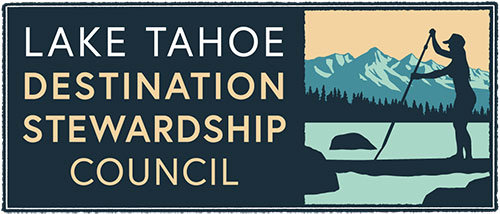Conservation at Lake Tahoe (compliments of the Incline Village & Crystal Bay Historical Society)
Conservation was established as a recognized national interest in America and as a viable alternative to development with the creation of the nation’s first national park at Yellowstone in 1872. Although artists and philosophers had long promoted the value of the wilderness and the need for conservation, Yellowstone National Park was the world’s first attempt at large-scale wilderness preservation.
Interest in trying to preserve the natural beauty of the Lake Tahoe basin began in the late nineteenth century in response to logging activities. As early as 1873, concerned citizens began expressing dismay at the destruction of the forests and large forest fires that resulted from the practices of the lumber industry. Conservationists had some success in the creation of the Lake Tahoe Forest Reserve in 1899, which set aside 136,000 acres of forest on the west side of the basin in the Desolation Valley area. However, in 1899, 1913, 1930, and 1935, attempts by citizens to convince Congress to create a Lake Tahoe National Park in the basin failed, mainly due to the amount of development and private interests that had already impacted large portions of the basin.
The U.S. Forest Service, established in 1905, built its first ranger station in the basin in 1911 and began buying cut-over and burned out land in the area. By 1920, the Forest Service owned one-fourth of the land in the basin, although most of the lakefront property remained in private hands. In the 1930’s, the Forest Service was unable to secure the funds to buy lands owned by the Carson and Tahoe Lumber and Fluming Company or the Hobart Estate, which were then sold to George Whittell. However, the Forest Service continued to buy land throughout the basin, making some large purchases in the 1950’s and 1960’s, particularly along the south shore of the lake at the Pope and Baldwin beaches.
In the 1970’s, the U.S. Forest Service began a policy of actively acquiring all significant parcels of land in the basin which were offered for sale. The Forest Service’s policy of active land acquisition resulted in the purchase of over 36,000 acres of land in the basin between 1965 and 1980.
The States of California and Nevada also established state parks at various locations in the basin. California established its first state park in the basin in 1927 at the site of a state owned fish hatchery near Tahoe City. In 1928, the state quickly started negotiating the purchase of its next state park, D. L. Bliss State Park. The state of Nevada moved more slowly in establishing a state park in the Lake Tahoe basin. The Nevada State Park Commission was created in 1935, but was not supported financially by the legislature until 1955. Since most of the Nevada side of the Lake Tahoe basin was privately owned by then, the Park Commission decided to rent beach property for the creation of its first park in the basin. In 1958, the Park Commission created Sand Harbor State Park by negotiating a lease with George Whittell. Eventually, the state of Nevada launched eminent domain proceedings in 1966 against George Whittell in order to gain title to about 5,300 acres of land in the basin, including the Sand Harbor property. The state won the court suit and created LakeTahoe Nevada State Park in 1967.
By the mid-1970’s the U.S. Forest Service and the state park commissions of California and Nevada owned more than seventy percent of the land in the Lake Tahoe basin. The Forest Service owned large tracts of the mountainous areas in the basin, as well as several beaches acquired from private land owners. The California State Park Commission operated Bliss, Emerald Bay, and Sugar Pine Point State Parks, as well as the Tahoe State Recreation Area. The Nevada State Park Commission operated Lake Tahoe Nevada State Park, which it had expanded to 13,000 acres. Efforts to preserve undeveloped land at Lake Tahoe resulted in the majority of the land in the basin being held by public agencies dedicated to managing the property and preserving it for recreational and environmentally favorable uses.
Besides the creation of parks and national forests, environmentalists became interested in the ecological impact of development in the basin. Concerns over water purity in Lake Tahoe began in the 1940’s. As the population in the basin grew, sewage began leaking into the lake from campsites, septic tanks, and inadequate sewage disposal systems. Runoff from areas disturbed by new development and road projects also contaminated the purity of the lake water. During the 1950’s municipalities struggled to construct new sewage treatment facilities, but were often overwhelmed by the needs of a growing resident and tourist population. Initial fears about water pollution centered around the spread of disease, but in the late 1950’s changed to fears for the ecological health of the lake itself.
During the building boom that started in the mid-1950’s, environmentalists became concerned about uncontrolled development within the basin. The growth in population brought “too many people, too many cars, too much development, too many ski runs cut into the hillsides, overbuilding around the lake, many damaged and polluted streams, and excess sewage.” The increase in development affected not only water clarity, but also caused air pollution, loss of wildlife habitat, and degradation of scenic areas. Developers paid little attention to land use patterns and built new projects without the benefit of an overall plan for the basin. The Tahoe Regional Planning Agency was created in 1969 to address the problem of uncontrolled growth, but environmentalists recognized that human residency in the basin would continue to cause problems in the future.
